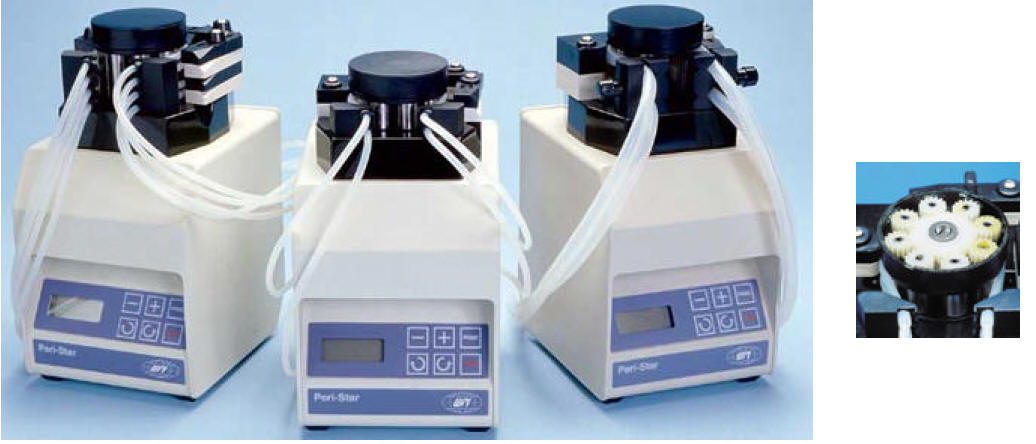Diaphragm pumps come with various names such as membrane pumps, pneumatic diaphragm pumps and air operated double diaphragm pumps. These are positive displacement pumps that utilise a reciprocating action of Teflon, rubber or thermoplastic diaphragm and valves that are located on the either sides of the diaphragm. A wide range of valves is available for diaphragm pumps such as flap valves, check valves and butterfly valves. These pumps are designed to offer reliable and safe pumping even when you are dealing with most aggressive media. These pumps are highly efficient in dispensing highly viscous, corrosive and abrasive fluids with utmost ease.
The tubular diaphragm is the main component of such type of pumps, which works with an inert liquid outside and process medium inside. The diaphragm is hydro-dynamically balanced because the external and internal pressures are equal, which indicates that the differential pressure that acts on the diaphragm is always zero. This eliminates the risk of diaphragm stress and thus, increases the lifespan of the diaphragm. These pumps are equipped with PTFE wetted components and all the components that come in contact with the pumped fluid are made of pure virgin PTFE. It is impossible for the pump to leak because it contains no mechanical seal, O-rings or packing. This increases the life of the pump and makes it highly efficient device to pump in any environment. Some of the benefits of diaphragm pumps are:
- These pumps can dry run for a long time without damage which prevents costly failure during adverse conditions.
- These pumps are capable of running against closed valves.
- The diaphragm is hydro-dynamically balanced that increases the life of the pump and reduces the maintenance cost.
- The diaphragm of the pump is impermeable, which makes sure there is no contamination of the processing liquid.
Categories of Diaphragm Pumps
Depending upon the components and structure these pumps are of three types:
- In the first type the diaphragm is packed from one side with the fluid that is to be pumped, while the other side is sealed in hydraulic fluid or air. The flexing of the diaphragm causes the volume of the pump to increase and decrease. The pumps feature with a pair of check valves that prevent the backflow of the fluids.
- In the second type, the working of the diaphragm is electromechanical. The working of the motor drive or crank is completely mechanical.
- The third variant comes with unsealed diaphragm that allows the fluid to be pumped from both sides.
















